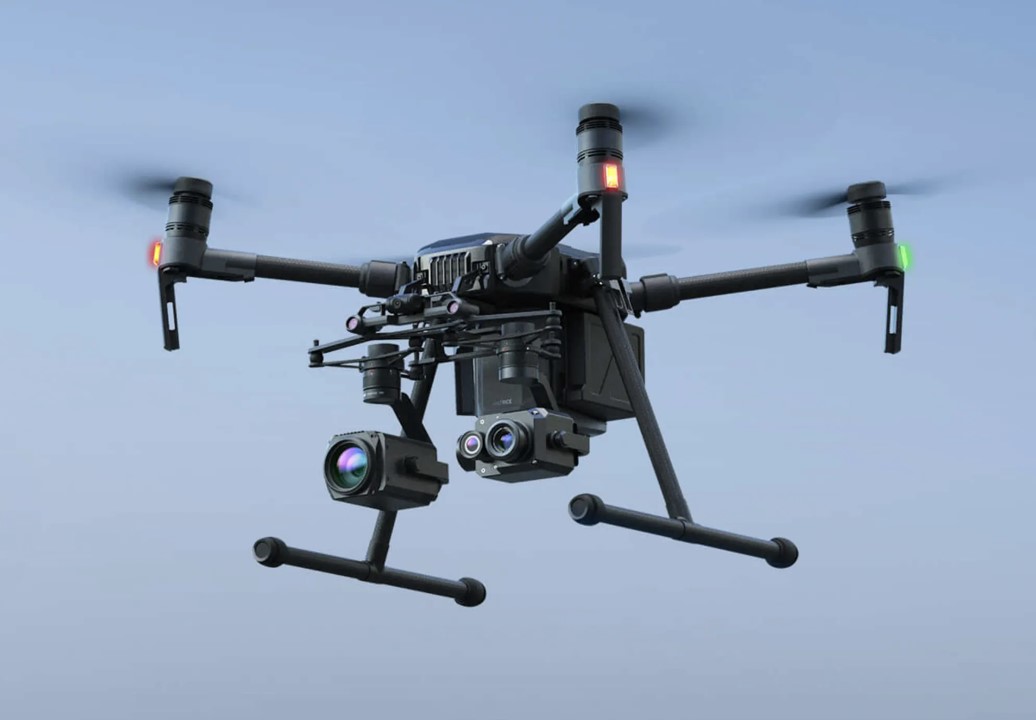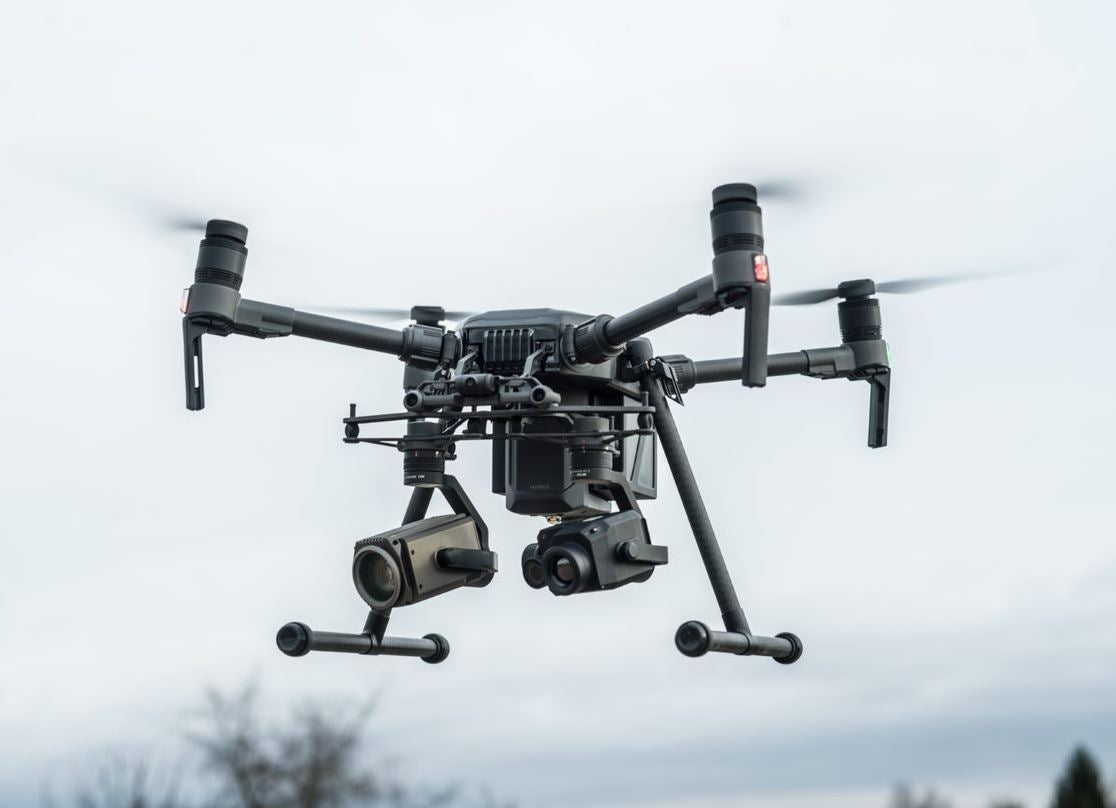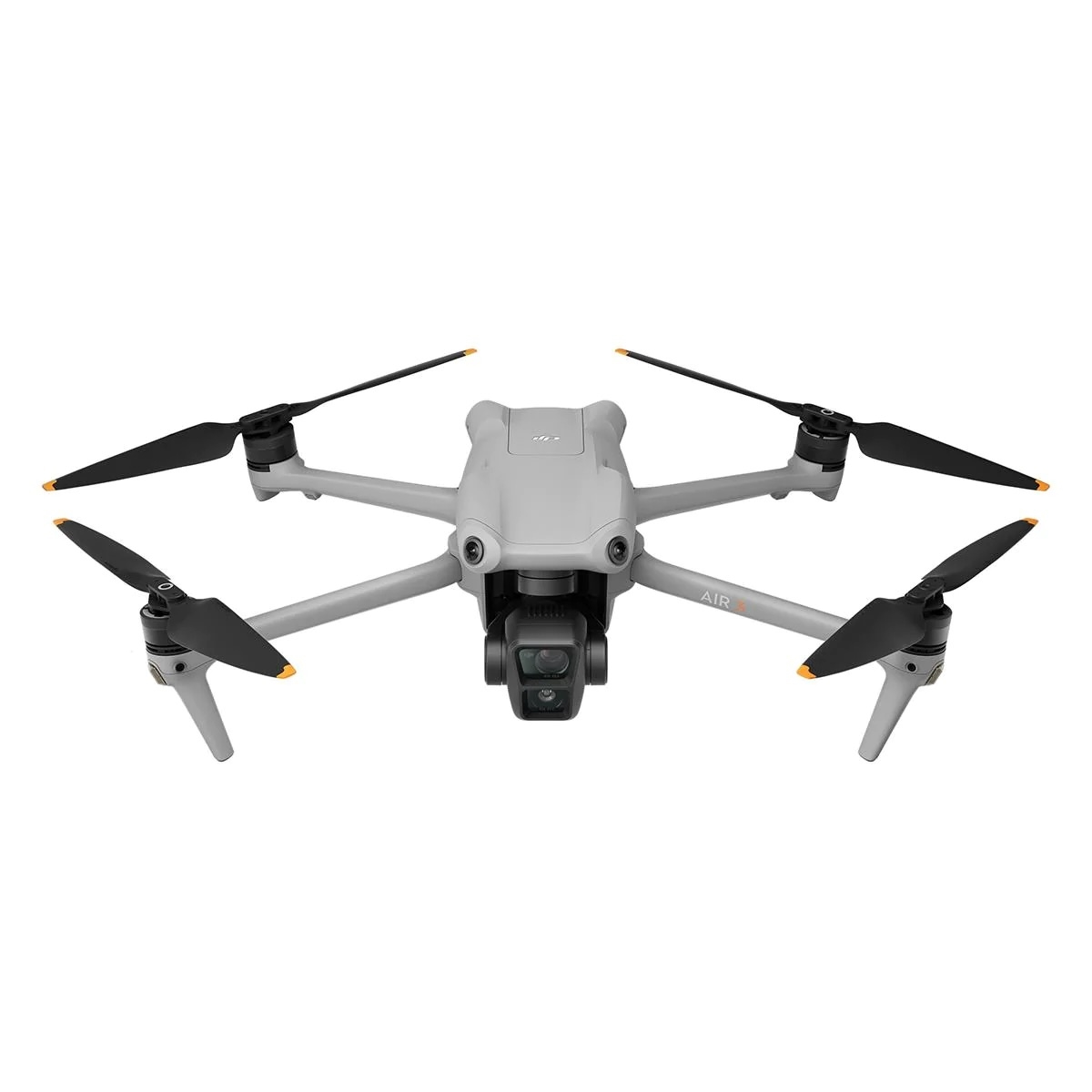Introduction
Overview of DJI Matrice 210
When it comes to drones, the DJI Matrice 210 stands out as a versatile tool designed specifically for professionals in various sectors, from aerial photography to industrial inspections. Imagine having the power of aerial technology right in your hands! The Matrice 210 boasts a robust airframe and a dual-camera setup that allows you to tailor your drone for specific tasks. Whether you’re capturing stunning visuals from above or conducting detailed inspections of infrastructure, this drone is engineered to meet diverse demands with precision. One of the key highlights of the DJI Matrice 210 is its adaptability. It can be equipped with different payloads, making it ideal for a multitude of applications. Here are some features that exemplify its capabilities:
- Dual Camera Technology: The ability to mount two cameras enables users to capture high-resolution images while incorporating thermal imaging for inspections or analysis.
- Weather Resistance: With an IP43 rating, this drone is designed to withstand light rain and dust, ensuring reliable performance in varying environments.
- Intelligent Flight Modes: From Waypoint navigation to Point of Interest, the Matrice 210 features intelligent flight modes that simplify the flying experience while ensuring high-quality output.
The design of the Matrice 210 is not only functional but also rugged, allowing it to navigate through challenging conditions. The ease of deployment and high-quality results make it a favorite among professionals.
Importance of Utilizing DJI Matrice 210
Embracing the DJI Matrice 210 can revolutionize how you approach tasks that require aerial perspectives. As a seasoned drone enthusiast, I’ve seen firsthand how utilizing this drone elevates your work and enhances operational efficiency. When I first used the Matrice 210 for aerial photography, I was blown away by its performance. The dual-camera setup allowed me to capture stunning images and pair them with thermal data, which was invaluable for a project I worked on analyzing building heat retention. It opened doors to perspectives I could only dream of before. Here are some reasons why the DJI Matrice 210 is crucial in various fields:
- Enhanced Safety: Utilizing a drone like the Matrice 210 means performing inspections or surveys from a safe distance. No more climbing ladders or scaffolding; you can monitor rooftops or high-voltage power lines from comfort and safety.
- Cost-Efficiency: By minimizing the need for manual labor and reducing the time spent on inspections, utilizing drones like the Matrice 210 can lead to significant cost savings for businesses. Photogrammetry and thermal imaging can provide insights quickly and effectively.
- Data Collection and Analysis: With integrated software and tools, the Matrice 210 enhances data collection. You can gather comprehensive aerial data for analysis, allowing for better decision-making.
- High-Quality Outputs: The camera options on the Matrice 210 produce crisp, clear images and videos that can be used in marketing, documentation, or reporting. Plus, you can adjust settings to suit various conditions.
- User-Friendly Interface: Thanks to its intuitive controls and smart features, both seasoned pilots and beginners can operate the Matrice 210 with ease. The setup process is straightforward, making it accessible for everyone.
In summary, the DJI Matrice 210 is not just a drone; it’s an intelligent tool that takes aerial work to new heights. Whether you’re in photography, construction, or public safety, this drone adapts and excels, making it a vital asset in today’s technologically driven landscape. Investing in a Matrice 210 could be the game-changer you need, ensuring that you stay ahead of the curve and see your work from a whole new angle. 🌟

Understanding DJI Matrice 210 Features
Dual Camera Capability
One of the standout features of the DJI Matrice 210 is its impressive dual camera capability. This isn’t just a gimmick; it’s a game-changer in aerial imaging that opens up a world of possibilities! When I first mounted the dual camera system, I couldn’t help but marvel at the versatility it brought to my aerial photography projects. With the Matrice 210, you have the option to attach two different cameras, allowing for the simultaneous capture of both standard and thermal images. This dual setup provides significant benefits:
- Flexibility in Payloads: Depending on your needs, you can select from a range of camera options from high-resolution visual cameras to advanced thermal imaging sensors. This flexibility means it’s suited for various applications, like real estate, industrial inspections, or disaster response.
- Real-Time Insights: Capture thermal and visual data simultaneously, giving you an immediate overview of a location. For example, during roof inspections, you can identify heat leaks while simultaneously photographing the overall structure.
- Enhanced Data Accuracy: The dual-camera system allows for more comprehensive data collection, facilitating better analysis and reporting. Imagine conducting a solar panel inspection and verifying both the surface conditions and any underlying issues in one go.
- Efficient Workflow: Rather than having to fly the drone multiple times with different cameras, the dual camera setup saves both time and operational expenses. It’s convenient and efficient, allowing you to maximize your productivity.
The advanced shooting modes that can be achieved with this dual setup really help to level up your work. Whether you’re looking for precise measurements from thermal data or breathtaking visuals for a marketing campaign, this feature can do it all!
Enhanced Flight Performance
Now, let’s talk about flight performance. The DJI Matrice 210 is designed not only with quality imaging in mind but also with remarkable flight capabilities that keep your operations running smoothly. Flying the Matrice 210 feels like directing a sophisticated piece of technology that responds to your commands almost intuitively. Here’s what makes the flight performance stand out:
- Wind Resistance and Stability: The Matrice 210 is engineered to withstand winds of up to 39 mph (63 km/h), allowing you to fly in less-than-ideal conditions. This means that when a sudden gust hits, you won’t lose your shot—your images remain stable and clear.
- Flight Time: With a maximum flight time of up to 38 minutes, you have plenty of time to capture everything you need in one go. I remember when I used it for a major construction site inspection; having that extra flight time meant I could gather comprehensive data without needing to recharge mid-mission.
- Intelligent Flight Modes:You can choose from a variety of intelligent flight modes designed to simplify complex operations. Here are a few worth mentioning:
- Waypoints: Plan a predefined route for the drone to follow, making it easy to conduct surveys or inspections over large areas.
- Point of Interest: Focus the camera on specific points of interest while the drone circles around, great for capturing all angles of a site.
- Follow Me Mode: Allows the drone to automatically follow you or a moving subject, perfect for action shots or outdoor activities.
- Obstacle Avoidance System: The Matrice 210 features multi-directional obstacle sensors that minimize the risk of accidents during flight. This enhances safety, especially when navigating complex environments.
In essence, the DJI Matrice 210’s dual camera capability and enhanced flight performance create a powerful combination that sets it apart in the aerial imaging game. Whether you’re capturing breathtaking vistas or performing critical inspections, this drone elevates your work (literally and figuratively) to new heights. With reliability, adaptability, and precision at your fingertips, you can tackle any project with confidence and finesse. 🌍✨

Getting Started with DJI Matrice 210
Unboxing and Assembly
Getting started with the DJI Matrice 210 is an exciting experience! When I received my unit, it felt like unwrapping a treasure chest of technology. As you begin, here are some key steps to guide you through the unboxing and assembly process smoothly.
- Unboxing: Carefully open the package, making sure not to damage any components. Inside, you’ll typically find:
- The Matrice 210 drone itself.
- The remote controller.
- Batteries and a charging hub.
- Propellers and tools for assembly.
- User manuals and quick start guides.
- Assembly: Make sure you have a clean workspace.
- Attach the propellers to the drone by aligning them with the corresponding motors (the propeller should match the color coding). Don’t forget to tighten them securely!
- Mount the gimbal by following the instructions in the manual. This is crucial as the gimbal must be set up perfectly to capture those stunning aerial shots.
- Connect any additional payloads, such as the dual cameras, by following the guided installation steps.
- Pre-flight Checks: Before heading out, conduct a thorough check:
- Ensure the battery is charged and connected securely.
- Check the propellers for any damage or obstructions.
- Verify that the firmware is up to date (we’ll cover this shortly!).
By taking your time during the unboxing and assembly process, I found that the anticipation built up, making my first flight all the more rewarding. Planning for setup can make a significant difference, especially if you have a critical mission ahead.
Firmware Update Process
Once your Matrice 210 is assembled, it’s time to ensure it’s running on the latest firmware. This step is crucial; firmware updates include important security enhancements, new features, and performance upgrades. Here’s how to easily update your firmware:
- Preparation:
- Download the DJI Assistant 2 software from the DJI official website to your computer. This will be essential for communicating with your drone.
- Ensure you have a USB cable ready to connect the drone to your computer.
- Connecting Your Drone:
- Power on the Matrice 210.
- Connect it to your computer using the USB cable. Make sure the DJI Assistant 2 recognizes the drone.
- Checking for Updates:
- Launch the DJI Assistant 2 program.
- Click on your Matrice 210 model in the software interface.
- Navigate to the “Firmware Update” section. The software will prompt you if any updates are available.
- Updating:
- Follow the on-screen instructions: Select the updates you’d like to apply and initiate the update process.
- Ensure the drone is powered during this update. You don’t want to interrupt this process, as it might lead to issues with the aircraft.
- Verifying the Update:
- Once the update is complete, restart the drone.
- You can then go back into the DJI Assistant 2 to confirm the firmware version to ensure the update was successful.
Updates usually take a short time, and I always feel an extra sense of confidence knowing my drone’s firmware is up to date before flying. It ensures I have all the latest safety and functionality that DJI has implemented. In summary, starting with the DJI Matrice 210—unboxing, assembling, and updating firmware—is a straightforward process that sets the stage for successful flights. Taking these initial steps seriously will allow you to maximize the drone’s potential right from the get-go. Don’t rush! Each phase is essential in ensuring you’re ready to explore the skies safely and effectively! 🚀🌤️

Utilizing DJI Matrice 210 for Aerial Photography
Camera Settings and Modes
Once you’ve mastered the basics of operating your DJI Matrice 210, the real fun begins—capturing stunning aerial photography! The dual camera setup offers terrific flexibility, and knowing how to effectively utilize its settings and modes can make a world of difference. First, let’s dive into the essential camera settings you need to familiarize yourself with:
- Resolution and Format:
- Ensure you’re shooting at the highest resolution (up to 20 MP for the RGB camera) for crystal-clear images.
- Choose RAW format if you plan on doing extensive post-processing. This will give you more flexibility with edits.
- ISO Settings:
- Adjust your ISO based on lighting conditions:
- Low ISO (100-400) for bright days.
- Higher ISO (800-1600) can be adjusted for darker conditions, but be mindful of noise.
- Adjust your ISO based on lighting conditions:
- Shutter Speed:
- A higher shutter speed (1/500 or faster) will help eliminate motion blur, especially on windy days.
- For capturing videos, maintaining a shutter speed roughly double your frame rate will yield professional-looking footage.
- White Balance:
- Manual white balance can enhance color accuracy. Set it based on the lighting conditions (e.g., sunny, cloudy) to achieve true-to-life colors.
Now, let’s explore some key camera modes you can utilize:
- Intelligent Flight Modes:
- Waypoint Mode: Plan a route for the drone to follow while automatically adjusting the camera. Perfect for creating smooth cinematic shots.
- Terrain Follow: Automatically adjusts altitude relative to the ground, which is useful when flying over varying terrain.
- Capture Modes:
- Single Shot: Ideal for getting that perfect shot. Take your time, align your frame, and snap away!
- Burst Mode: Capture multiple images in quick succession—excellent for fast-moving subjects or fleeting moments.
Using these settings and modes can dramatically enhance the quality of your aerial photography, making your images more vibrant and professional-looking.
Tips for Capturing Stunning Aerial Shots
With your camera settings optimized, it’s time to think about how to capture those breathtaking aerial shots that will leave everyone in awe. Here are some personal tips and techniques that have helped me achieve great results.
- Plan Your Flight:
- Before taking off, scout your location (if possible) and plan your shots. Take note of interesting landscapes, structures, or natural elements that would make compelling subjects.
- Use apps like Google Earth or DJI’s own GS Pro to pre-plan your routes.
- Consider Light:
- The best times for aerial photography are during the golden hours—shortly after sunrise and before sunset. Shafts of light create dramatic shadows and enhance textures.
- Avoid harsh midday light that can wash out colors.
- Composition Techniques:
- Apply the rule of thirds by mentally dividing your frame into threes. Place points of interest along these lines or intersections for a balanced composition.
- Look for leading lines, such as roads or rivers, that guide the viewer’s eye through the image.
- Experimenting with Angles:
- Don’t just shoot from directly above; kite into novel perspectives. Try flying at oblique angles or capturing images while the drone is in motion to add dynamism.
- Get creative with height! Low altitude shots can highlight details, while high shots can provide a grand perspective of a landscape.
- Post-Processing:
- After you’ve captured your images, consider using editing software like Lightroom or Photoshop to enhance your photos. You can adjust exposure, contrast, saturation, and sharpness to really make your images pop!
With a little bit of planning and practice, you can harness the full potential of the DJI Matrice 210 to create stunning aerial photography that truly captures the beauty of your surroundings. Whether it’s landscape photography, real estate shots, or even some breathtaking action sequences, the sky’s the limit! 🌅📷

DJI Matrice 210 for Industrial Inspections
Integrating Thermal Imaging
The DJI Matrice 210 isn’t just a powerful tool for stunning aerial photography; it’s also revolutionizing the way we conduct industrial inspections—especially when it comes to integrating thermal imaging. This feature has proven to be invaluable for various industries, from energy to construction. When I first started using the thermal imaging capabilities of the Matrice 210, it felt like I had a superpower. Being able to visually detect heat differences and anomalies opened up a whole new level of insight. Here’s how the integration of thermal imaging works:
- Advanced Thermal Cameras: The Matrice 210 can be equipped with FLIR cameras that capture thermal data alongside traditional visuals. This dual perspective is particularly beneficial for identifying energy loss, insulation issues, or overheating components in machinery.
- Real-Time Analysis: With thermal images processed in real-time, you can quickly assess conditions. For example, during a recent inspection of solar panels, I was able to identify malfunctioning cells due to their heat signatures. It saved the crew a significant amount of time and maintenance costs.
- Enhanced Reporting: The combination of visual and thermal data creates a comprehensive inspection report. You can annotate thermal images with specific observations, making it clear for the stakeholders exactly what issues need addressing. This approach improves communication and transparency with clients.
- Data Overlay Features: Some thermal imaging cameras allow for the overlay of traditional and thermal images. This feature is beneficial for giving context to any issues detected, which can significantly enhance your reports.
Integrating thermal imaging into your inspections leads to a more proactive approach in identifying issues before they escalate. The ability to “see” unseen problems is invaluable in ensuring the longevity and safety of industrial infrastructures.
Conducting Inspections Safely and Efficiently
When conducting inspections using the DJI Matrice 210, safety and efficiency should always be at the forefront. Drones inherently reduce risk by eliminating the need for manual inspections in dangerous or hard-to-reach areas, but there are several best practices to follow to ensure a smooth operation.
- Pre-Flight Planning:
- Before any flight, conduct a thorough site assessment. Identify potential hazards like power lines, obstacles, and weather conditions.
- Create a flight plan that outlines your inspection route, including waypoints. This ensures efficiency and allows you to cover all targeted areas without unnecessary backtracking.
- Calibration Checks:
- Perform calibration checks on the drone’s sensors and cameras prior to flight. Confirm that the thermal camera is functioning correctly, as misalignment can lead to inaccurate readings.
- Pilot Training:
- Ensure that the operators are well-trained to handle both the drone and thermal imaging equipment. Familiarity with the technology enhances operational efficiency and minimizes the risk of errors.
- Using the Right Flight Modes:
- The Matrice 210’s intelligent flight modes, such as Waypoints or Point of Interest, can enhance inspection efficiency. Setting waypoints minimizes pilot workload, allowing the operator to focus on data collection rather than manual flying.
- Stay Compliant with Regulations:
- Always adhere to local drone regulations and guidelines. This includes maintaining visual line of sight, being aware of no-fly zones, and obtaining necessary permits for commercial operations.
- Post-Flight Analysis:
- After inspections, review and analyze the collected data. Conducting post-flight debriefings allows for a discussion of findings and helps identify any areas for improvement in future inspections.
In summary, the DJI Matrice 210 is a powerful ally in the realm of industrial inspections, particularly when enhanced with thermal imaging technology. By prioritizing safety, efficiency, and proper planning in your inspections, you can maximize the drone’s potential and ensure high-quality results for your organization or clients. Each flight not only helps in identifying existing issues but also aids in proactive maintenance, ultimately saving time and costs down the line. 🚁✨

Enhancing Data Analysis with DJI Matrice 210
Data Management Tools
One of the standout features of the DJI Matrice 210 is its ability to enhance data analysis for various applications, especially through its robust data management tools. Having access to organized, easily interpretable data can significantly improve decision-making processes, and the Matrice 210 does just that. When I first began incorporating the Matrice 210 into my projects, the way it streamlined data collection blew me away. Here are some effective data management tools and practices that can help you optimize your workflow:
- Data Transfer and Storage:
- The Matrice 210 has built-in storage capabilities and supports external SD cards, allowing you to capture and store high-resolution images and videos efficiently.
- Post-flight, be sure to transfer your data to a secure storage system or cloud platform to prevent loss.
- File Organization:
- Develop a systematic approach to categorize your data. For example, separate files by project name, date, or location. Maintaining a good file structure makes it easier to retrieve specific images or videos in the future.
- Analysis Software Integration:
- Utilize analysis software that can handle the type of data you collect. Several platforms specialize in managing thermal and visual data, offering robust tools for analysis.
- For example, using FLIR Tools with your thermal data allows you to create reports and conduct in-depth thermal inspection analysis, adding significant value to your findings.
- Creating Reports:
- Automatic reporting features available in various software can save time and enhance professionalism. By combining visual and thermal data into cohesive reports, you can present your findings clearly to stakeholders.
- Data Visualization:
- Data is often more meaningful when visualized rather than simply read. Use graphs and heat maps to better illustrate data points and trends you observe from your inspections.
With these data management tools in place, organizing, analyzing, and interpreting your data becomes second nature, allowing you to focus on extracting valuable insights from your inspections.
Integration with Mapping Software
The DJI Matrice 210 also excels when combined with mapping software, providing an unparalleled advantage in efficiency and accuracy. By integrating with these tools, you elevate your aerial data collection capabilities to a whole new level. Here’s how integrating mapping software can amplify your efforts:
- Enhanced Surveying Capabilities:
- Use applications like DJI Terra or Pix4D to create detailed maps and 3D models from your aerial data. I remember using DJI Terra to manage a construction site survey; the level of detail in the resulting maps was remarkable and made it easy to present findings to the project manager.
- Automated Flight Planning:
- Mapping software allows for customizable flight paths that can cover extensive areas with ease. You can define waypoints, altitudes, and camera settings, ensuring you capture everything needed to build your map efficiently.
- Real-Time Data Processing:
- Some mapping applications support real-time data processing, allowing you to generate results on the fly. This feature is particularly useful in fast-paced environments, such as disaster response situations where timely data is essential.
- Georeferencing Images:
- Mapping software typically comes with georeferencing capability, adding precise location data to every image captured. This feature is invaluable in construction and environmental monitoring, allowing you to track changes over time seamlessly.
- Collaborating with Teams:
- Many mapping solutions support cloud-based sharing, enabling easy collaboration with your team or clients. Everyone can access the data and maps generated, fostering a more transparent working environment.
By taking advantage of data management tools and integrating mapping software, the DJI Matrice 210 empowers you to conduct thorough inspections, visualize findings, and deliver actionable insights more efficiently than ever. This powerful combination not only enhances the overall quality of your work but transforms how data is utilized across industries. You’re not just collecting data; you’re creating actionable intelligence that drives better decisions and outcomes. 🌍📊

Optimizing Flight Performance
Understanding Flight Modes
When it comes to the DJI Matrice 210, understanding its various flight modes can significantly enhance your flying experience and improve the overall performance of your aerial tasks. Each flight mode is designed for specific scenarios, tailoring your operation based on the mission at hand. During my early flights with the Matrice 210, learning how each flight mode functions revolutionized my approach to capturing data and images. Here’s a breakdown of some key flight modes and how you can utilize them effectively:
- Positioning Mode:
- This is the default flight mode for general use. The drone maintains a stable position, making it perfect for capturing still images or videos. I frequently use this mode for photography sessions where ensuring a steady shot is crucial.
- Waypoint Mode:
- Plan a flight path using waypoints on a map, and the drone will autonomously navigate to each point. This mode is excellent for covering large areas without needing to control the drone manually continuously. During one site survey, being able to set waypoints around a construction site allowed me to focus solely on monitoring data collection rather than piloting.
- Point of Interest Mode:
- Focus on a specific subject while the drone automatically circles around it. This mode is ideal for dynamic shots and capturing comprehensive views of the subject. Think of it as your built-in cameraman—just set it and let it do the work!
- ActiveTrack Mode:
- The drone follows a selected subject while keeping it in the frame. This mode is fantastic for real-time filming or capturing moving subjects, such as vehicles or people in action. On a recent outdoor event, this feature made it effortless to capture stunning moments without constantly adjusting the drone’s position.
- Terrain Follow Mode:
- This mode adjusts the drone’s altitude based on the terrain below it. It’s particularly useful when flying over uneven landscapes where maintaining a consistent height is vital. It was a lifesaver for me during a project where we had to monitor a hillside; the drone maintained the ideal altitude automatically among the terrain changes.
Understanding these different flight modes allows you to tailor your approach based on specific missions, improving your operational efficiency.
Safety Precautions for Smooth Operations
While mastering flight modes is essential for optimizing performance, ensuring safe operations should always be your top priority. Here are some important safety precautions to keep in mind:
- Pre-Flight Checklist:
- Before taking off, conduct a thorough checklist that includes verifying battery levels, ensuring the propellers are securely attached, and confirming the weather conditions are suitable for flight.
- Maintain Line of Sight:
- Always keep the drone in your visual line of sight during operation. This practice not only complies with regulations but also helps you avoid potential obstacles and hazards.
- Familiarize with Local Regulations:
- Different regions have specific regulations regarding drone operations. Take time to understand local laws, airspace restrictions, and any necessary permits before flying.
- Weather Conditions:
- Avoid flying in inclement weather, such as high winds, rain, or fog. These conditions can greatly affect stability and control. Before each flight, I check weather forecasts not just for safety but to ensure optimal flying conditions.
- Battery Management:
- Monitor battery levels closely and avoid flying below 30% capacity to prevent sudden loss of power. Having a second battery on hand can mitigate any issues during your operation.
- Emergency Procedures:
- Familiarize yourself with the emergency landing procedures and the drone’s fail-safe features. This knowledge is critical in the event of unexpected technical failures.
- Practice Makes Perfect:
- If you’re new to flying drones or the Matrice 210, spend time practicing in open spaces where obstacles are minimal. Getting comfortable with the controls boosts your confidence and helps you execute maneuvers with ease.
By understanding flight modes and prioritizing safety, you optimize your flight performance while minimizing the risks associated with drone operations. With practice and awareness, you can achieve smooth, efficient flights that enhance your aerial photography, inspections, and data collection endeavors. Embracing these precautions ensures that every flight with your DJI Matrice 210 is not only effective but also safe and enjoyable! 🌤️✈️


